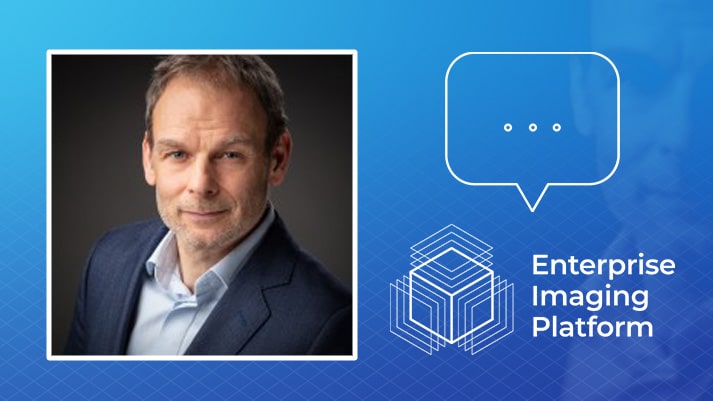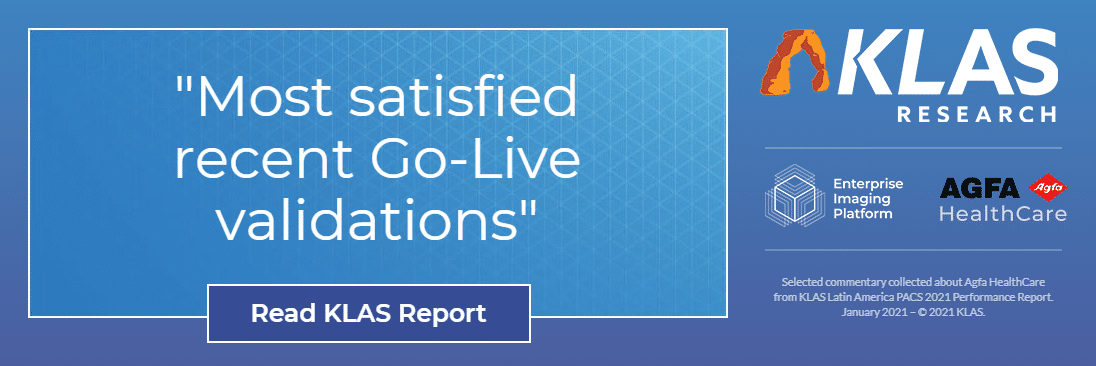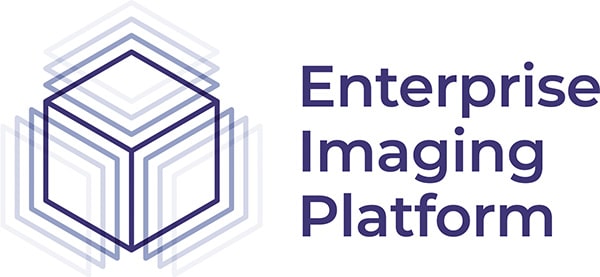By customizing the project management methodology to the unique needs of an Enterprise Imaging implementation, Agfa HealthCare has improved efficiency, cost control – and customer satisfaction.
Interview with Lieven Hermans,
Agfa HealthCare’s Service Delivery and Operations Director for Northern Europe
While we talk a lot about the transformation Enterprise Imaging brings to our customers, it has also required a revolution in the approach to support and service. As Lieven Hermans, Agfa HealthCare’s Service Delivery and Operations Director for Northern Europe, explains, an Enterprise Imaging project is very different from an PACS implementation in the past. The service organization created a new approach and now, this successful project management and services structure is being extended to all projects in the region.
In an interview, Lieven explained what this means for both Agfa HealthCare collaborators, as well as customers. “With this new working method, everyone knows what the project entails, they are all on the same page, and we can plan and forecast better, for a more seamless transformation,” he describes. “Thanks to this mind shift, the vast majority of our Enterprise Imaging projects are going live on time or even ahead of schedule, and customer satisfaction has risen considerably.”
Could you describe the methodology you have developed for implementing an Enterprise Imaging project?
An Enterprise Imaging implementation is a very collaborative process, within the Agfa HealthCare services organization, and of course between Agfa HealthCare and the customer. We put our years of experience with imaging management to work, to define three key pillars for a successful Enterprise Imaging project.
- The implementation model
The first pillar is the implementation model, which enables us to define what roles we will need and for how long, project milestones, etc. We divide up the activities and deliverables into ‘work packages’ for each role: the project manager, the applications specialists, the technical engineers, etc. and clearly outline each role’s responsibilities.
- The right people in the right place
The second pillar is having the right people in the right place. We made a clear split between ‘implementation roles’ and ‘support roles’. Implementation is a planned activity with a specific end-point. Support is a continuous activity, and is more difficult to predict. These two roles require different approaches and skills, and our staff have been organized around this mindset.
The implementation team is already involved in the pre-sales phase, helping make sure everything is correct. At this point, we also do an initial workflow analysis. Once the contract is signed, we analyze the scope in an in-depth way, through a complete workflow analysis of the departments and the configuration data. And we prepare the test procedures, even before we begin the basic configuration. We take our time to perform these analyses, as it is very important for us to know exactly what the project’s scope, timing and budget will be. This also helps us set the customer’s expectations right from the start, so everyone knows where we will be in 4 months, 7 months, etc., and when the project will go live. The analyses also enable us to anticipate potential hurdles early on, so we can take measures proactively; for example, if we temporarily need additional staff to complete a certain step.
- Get hospital management on board
The customer’s management has to be on board with the project, for it to be a success. Before we start, I arrange an executive meeting to explain the project, the elements hospital management needs to take into account, and the key success factors. We also point out that we won’t start the project until both our organization and theirs are ready. Is the project manager 100% available for the project? Is the hospital ready for training of all end-users? If not, it is better to wait. The management appreciates this clarity.
Implementing Enterprise Imaging can be very complex. How do you enhance project efficiency?
Standardization enables us to better estimate and control timing and costs for the customer. We have developed certain standards, and we stay as close to them as possible, while still meeting the unique needs and set-up of the customer. For example, we have created a library that includes standard interfaces for connecting Enterprise Imaging with the software systems that are commonly used in the region. The customer can always deviate from this library, of course, by going outside the defined project scope, so nothing is closed off.
Another example is hanging protocols. There are different ways to display images for each modality. If you have 35 radiologists, and you set this up individually for each one, you end up with 35 different hanging protocols. Based on our experience, we have created a library with the six best hanging protocols, which meet the needs of most radiologists. Of course, we can still adapt the scope and configure a different hanging protocol for any radiologist who needs it.
A big part of the success of an Enterprise Imaging transformation is the adoption of the system by the different end-users. How to you ensure this adoption?
We have created a multi-stage configuration methodology that lets us work more collaboratively with the customer, and accompany the end-users step by step in their adoption. We begin with a simple configuration, and then when the users are comfortable with it, we add more functionalities. After a few months, we analyze how they are using it, and how we can adjust workflows to increase efficiency, volume, automation, etc.
We also support our customers to be as autonomous as possible. One way we enable this is with ‘champions’ and ‘key users’: hospital staff who can train their colleagues and provide first-line support. This reduces implementation time, costs, escalations, incidents and change requests. So it is a very effective methodology, which also enhances our customers’ satisfaction!
How does your methodology support extending Enterprise Imaging to other image-producing departments in the hospital?
Here, as well, standardization increases efficiency. We strive to have a central Enterprise Imaging core as a foundation; this makes it possible to add more imaging service lines to evolve the platform with the customer’s needs. This is also true for expanding the Enterprise Imaging solution to different sites and facilities.
On the other hand, we need to consider other requirements in these cases, such as expanding storage, at both the infrastructure and application level. Also, implementing Enterprise Imaging in additional departments can be more complex than starting from scratch, because you can’t shut down the departments that are already using the platform. It would be a bit like trying to replace an airplane’s engine while the airplane is in the air!
Once the implementation is complete, identifying and solving issues becomes crucial. How is the support organisation structured?
Despite the major transformation of our installed customer base, we have actually reduced service tickets over the past years. We constantly work to improve our service, and I am very proud of our accomplishments.
Recently, we have begun using a collaboration tool. When a ticket comes in, it is automatically published in a channel with 15-20 people. If it is an ‘easy fix’, it gets taken care of right away. More complex issues can be discussed between colleagues: they collaborate to find a solution. We plan to roll this tool out to customers as well, soon, further strengthening our relationships and agility.
We are also working to improve our predictive support, to prevent outages, for example. We have put together a central operations team who adjust and automate our Global Remote Incident Prevention (GRIP) services story, fully according to ITIL processes. In this way we want to further increase efficiency and support our customers even better.
For more on Enterprise Imaging and Agfa HealthCare’s Implementation and Support Methodology, visit the Agfa HealthCare website.
Read how leading health organizations around the globe are implementing Enterprise Imaging, transforming the delivery of patient care. Start here.



